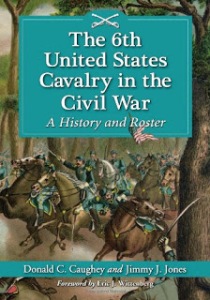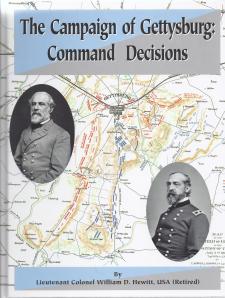Yesterday, July 19, was the sesquicentennial of John Hunt Morgan’s fight at Buffington Island, OH (see here.) One of the lesser known incidents of that fight was the death of “Judge” Daniel McCook, Sr., who sired no less than four Union general officers. Brother John provided two more. In fact, brothers George, John and Daniel gave 14 sons to the war effort – together the clan was known as “The Fighting McCooks.” Daniel was among the civilian observers at First Bull Run, and while the experience was likely harrowing for many of them, perhaps none were as affected as the Judge.
There were McCook’s aplenty scattered about the plains of Manassas on July 21, 1861, including Daniel’s young son Charles, a private in Company I of the 2nd Ohio (nephew Anson was a captain in the regiment as well, and son Alex was colonel of the 1st Ohio.) Charlie, eighth of Daniel’s nine sons, was serving off the line as a guard at the temporary field hospital set up at Mrs. Spindle’s farm on the north side of the Warrenton Turnpike between Cub Run and Bull Run. Early in the day the site seemed so safely removed from the action that father and son had lunch together.
Sometime after noon the Judge determined he wanted a better view of the action and moved west along the pike. A few hours later, all hell broke loose. Daniel was swept east with the waves of retreating Yankees. He wrote in a letter to his son Robert five days later that he came upon a wounded Charlie being beaten by a mounted Confederate cavalryman with the flat of his sword. Someone shot the rebel, and Daniel carried his son to the field hospital. Assured by doctors there that it was safe to move him, Daniel loaded the boy into his carriage and headed east. Despite Charlie’s pain and pleas to stop, Daniel pressed on to Fairfax Court House. There, a doctor removed the ball from Charlie’s back and pronounced the wound fatal. As was common in those days, Daniel broke the news to the boy. Together they awaited the end. The medical staff moved on toward Washington. About 2:30 on the morning of July 22nd, in a bed shared with his father, Charles McCook died. He was eighteen years old.
That wouldn’t be the last time in the war death visited Daniel McCook’s family. Down in Alabama son Robert, a brigadier general, was killed in August, 1862. Some say he was murdered by “guerilla” Frank Gurley in the act of surrendering, while others claimed his wound was received during a skirmish with the 4th AL Cavalry in which Gurley was a commissioned captain. Shot in the stomach, Robert suffered for a full day before succumbing to his wound. The “guerilla” version of events won out in the North, and the outraged Judge became obsessed with enacting revenge on Gurley. He acquired a new Henry repeating rifle (pictured above) to help with the job. In July 1863 he thought he had his chance, as Morgan’s band of raiders moved through McCook’s home state of Ohio (he was a native Pennsylvanian.) The now Major McCook, a paymaster in the Army of the Ohio, hitched along with a cavalry detachment under Brigadier General Henry Judah in pursuit of the raiders with whom, it was rumored, Gurley was riding.
Morgan’s band was brought to ground in Southeast Ohio on July 19, 1863, where they attempted to re-cross the Ohio River at Buffington Island. The 65-year-old Judge grabbed his Henry, mounted up, and joined in with the advance troopers, who came upon the enemy unexpectedly in a fog. McCook, like Robert, was shot in the abdomen. He lingered more than two days, and died on the evening of July 21, nearly two years to the hour after he had felt the life leave the body of Charlie.
After escaping Buffington Island, Morgan and his men were captured near New Lisbon, Ohio on July 26. There was no evidence that Frank Gurley had been with the raiders.*

Daniel McCook, Sr Plot, Spring Grove Cemetery, Cincinnati, OH (Gravepedia) Graves of Daniel Sr., Charles, and Robert
For more on the McCooks, see Charles and Barbara Whalen, The Fighting McCook’s.
*Gurley was captured later in 1863, imprisoned, tried for McCook’s murder, convicted and sentenced to death, mistakenly exchanged, arrested again after the war for imposition of sentence, released, and lived a long life. For a detailed and different account of his career, see here and here.









Recent Comments